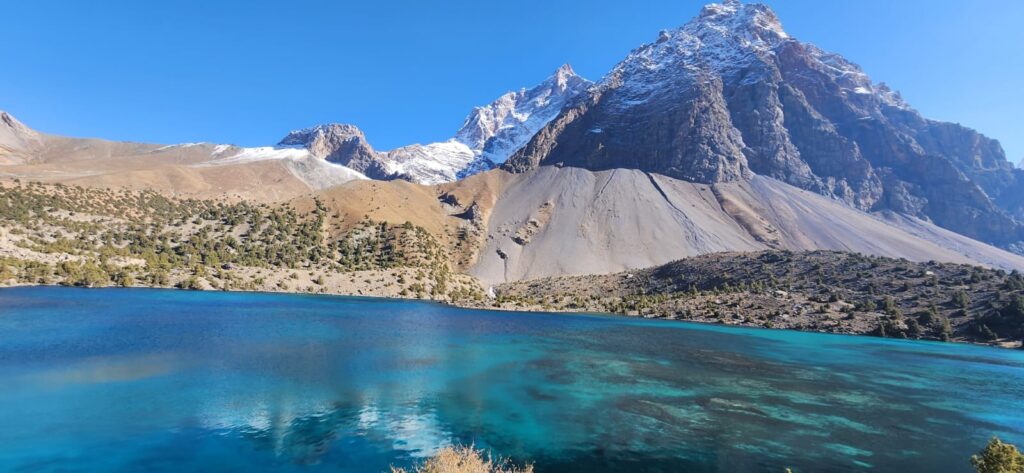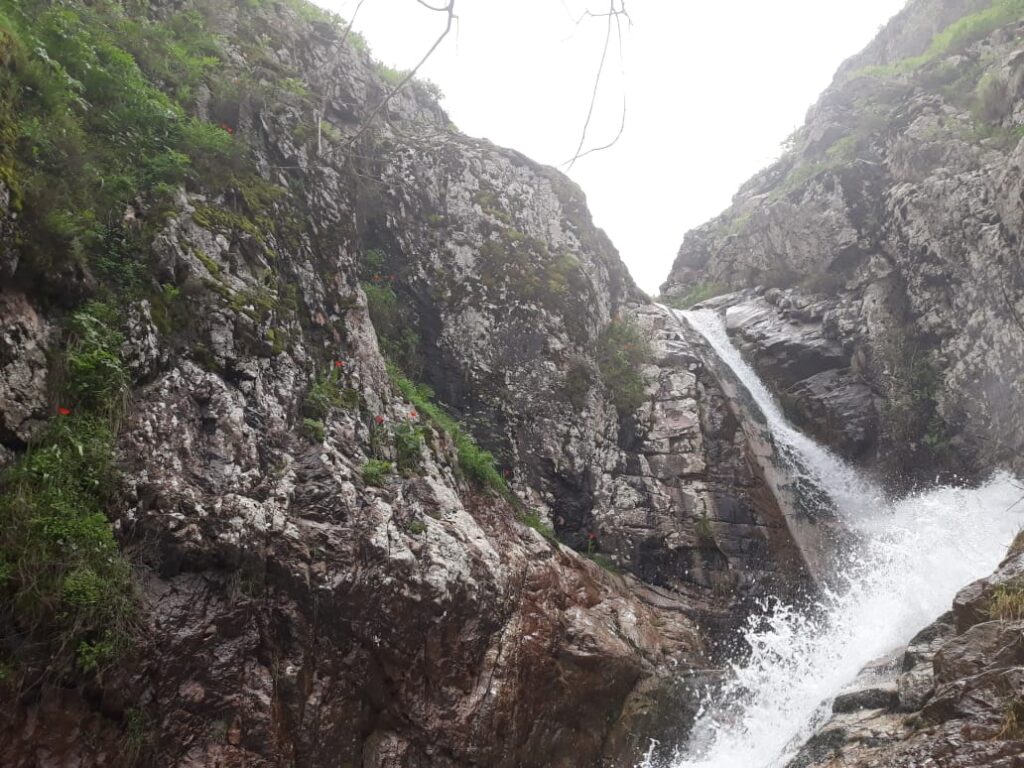The Syr Darya is not born in Tajikistan, yet Tajik mountains breathe into it. Glaciers and streams from the Pamir and Tian Shan ranges feed tributaries that later merge into the great river. The river itself stretches more than 2,200 kilometers across Central Asia, through Kyrgyzstan, Uzbekistan, and Kazakhstan, before seeping into the basin of what remains of the Aral Sea. It is a river whose flows cannot be contained within a single state, a body of water that carries both memory and dispute across borders.
To walk beside its upper tributaries in Kyrgyzstan is to feel the mountain water as fresh as air. Snowmelt tumbles over rocks, pooling into irrigation canals that cut across foothill villages. Shepherds lead flocks to drink at side streams. They call the river daryo, the great flow, knowing it nourishes life beyond their pastures. In Tajikistan, people speak of the Syr as the neighbor’s river, one that does not belong to them but that still shapes their fate. Tajik glaciers melt into tributaries that pour north, feeding a river most of the country will never see.
During the Soviet period, Syr Darya’s waters were commanded into a vast system of canals, reservoirs, and pumping stations. Engineers planned with the confidence of total control. Cotton demanded irrigation, and cotton was the crop that tethered Central Asia to Moscow. The Great Fergana Canal diverted water from the Syr into Uzbek fields, turning deserts into white fields each summer (Micklin, 1988). Downstream, Kazakhstan’s steppe also turned green with Soviet planning. Yet this command of water came at cost. By the 1960s, flows reaching the Aral Sea declined drastically, setting in motion its well-known desiccation (Micklin, 2007).
A villager in Khujand, once called Leninabad, remembers when the riverbanks teemed with fish. “We fished with nets and baskets,” he says, “and the river gave more than enough.” Today, fish catches are sparse, and stretches of the river are polluted from upstream agriculture and industry. What was once abundance has become caution: fishers warn of mercury in sediments, of pesticides concentrated in eddies. The Syr is still a giver of life, but it is also a carrier of residues.
The Syr Darya is a river that refuses to be national. It begins in glaciers, runs through four states, and ends in a sea that is vanishing. Its waters irrigate millions of hectares of cotton and wheat, sustain cities, and quench the thirst of millions. Yet at every bend it is asked to serve competing masters, each dam, canal, and field pulling at its body. Geography makes the Syr plural, never singular.
Water treaties attempt to hold the river in balance. After independence in 1991, new borders redefined old flows. Kyrgyzstan, where much of the Syr’s water originates, argued for compensation when releasing water from reservoirs for downstream agriculture. Uzbekistan, with its vast cotton fields, demanded steady supply in summer. Kazakhstan, downstream still, relied on flows for its agriculture and for replenishing the North Aral Sea. Negotiations produced temporary agreements, yet mistrust lingers (Spoor & Krutov, 2003). Each state sees the Syr as lifeblood, but their needs rarely align.
Hydroelectric power complicates the picture. Kyrgyzstan and Tajikistan, rich in mountains, value water for electricity in winter, releasing flows when turbines demand them. But Uzbekistan and Kazakhstan want irrigation water in summer, not winter. The river becomes a bargaining tool: electricity traded for gas, flows exchanged for grain. This barter makes the Syr not only an ecological system but also a political economy in motion (Weinthal, 2002).
To stand by the river near Khojent is to see geography’s imprint on daily life. Cotton fields stretch outward, canals run straight as engineered lines, and the river itself looks tired, slowed by diversions. Children play by the banks, though parents warn them of currents and pollution. A farmer points to his furrowed field and says, “Without this river, there is no bread here.” His statement is literal and even almost political.
Ecologists worry about salinity and soil degradation. Long years of irrigation without adequate drainage have raised groundwater levels, bringing salts to the surface. Fields that once produced cotton now produce white crusts of salt, abandoned as sterile (Glazovsky, 1995). Pesticides accumulate in sediments. Downstream, in Kazakhstan, restoration of the North Aral Sea through the Kok-Aral Dam has partially revived fisheries, but this depends on Syr Darya’s flow being steady (Pala, 2006). The river’s health downstream is hostage to decisions made upstream.
The Syr is also a habitat corridor. Migratory birds follow its wetlands; reeds and fish sustain them along the way. As flows shrink, wetlands contract, habitats fragment. What appears in one place as irrigation efficiency appears elsewhere as ecological loss. Geography’s lesson is that water cannot be used in isolation; its flows tie distant places together.
At night along the river, the water carries reflections of lights from nearby cities of Khujand, Tashkent, Shymkent. It is a river of both rural and urban lives. Factories discharge waste; farms pull water; households wash clothes at its edge. Each action is small, but together they shape the river’s body. To think of the Syr Darya is to think of a river written by millions of daily acts, each connected across distance.
In Tajikistan, though the Syr does not flow fully within its borders, its tributaries remind the country of shared fate. Glaciers that melt in Tajik Pamirs feed the larger basin. As those glaciers retreat under warming climate, the Syr’s long-term future wavers (Savoskul & Smakhtin, 2013). For now, water surges each spring, but the source itself is thinning. To watch the river is to watch ice turning into politics, snow turning into crops.
Walking along the Syr is to hear competing voices. A fisherman asking for cleaner water. A farmer demanding more irrigation. A minister insisting on national rights. A hydrologist tracing glacier retreat. Together, they form a chorus, not harmonious but insistent. The Syr Darya speaks through them, reminding us that geography is negotiation, that rivers are arguments made liquid.
References
- Glazovsky, N. F. (1995). Aral crisis: man-made desert in Central Asia. Ambio, 24(6), 376–381.
- Micklin, P. (1988). Dessication of the Aral Sea: a water management disaster in the Soviet Union. Science, 241(4870), 1170–1176.
- Micklin, P. (2007). The Aral Sea disaster. Annual Review of Earth and Planetary Sciences, 35, 47–72.
- Pala, C. (2006). Aral Sea’s partial recovery offers hope. Science, 312(5781), 183.
- Savoskul, O. S., & Smakhtin, V. (2013). Glacier systems and seasonal water supply in Central Asia. IWMI Research Report.
- Spoor, M., & Krutov, A. (2003). The power of water in a divided Central Asia. Perspectives on Global Development and Technology, 2(3), 593–614.
- Weinthal, E. (2002). State making and environmental cooperation: Linking domestic and international politics in Central Asia. MIT Press.








